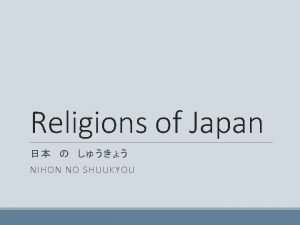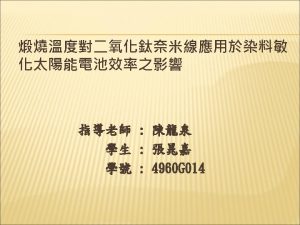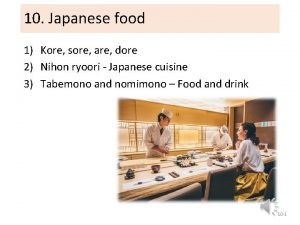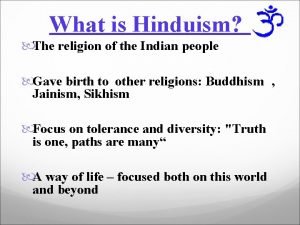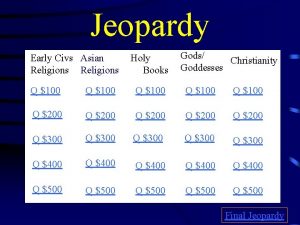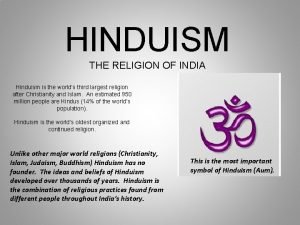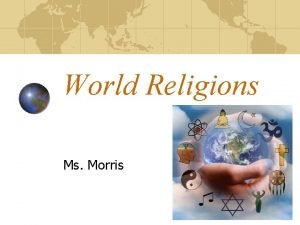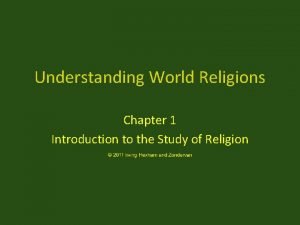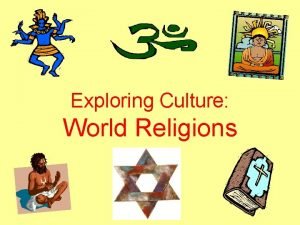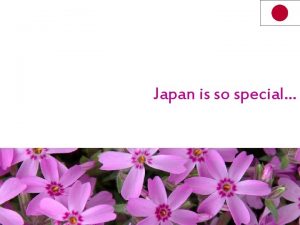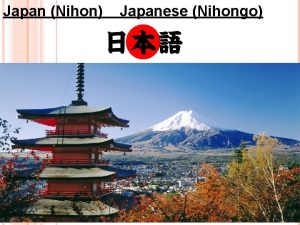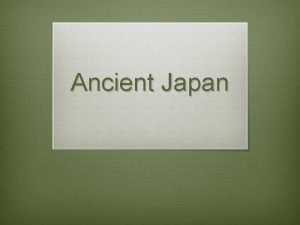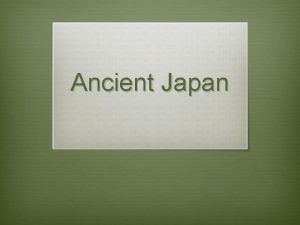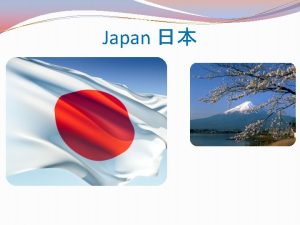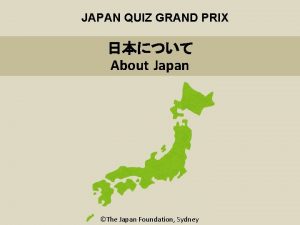Religions of Japan NIHON NO SHUUKYOU What do














- Slides: 14

Religions of Japan 日本 の しゅうきょう NIHON NO SHUUKYOU

What do you know about religions in Japan? MAKE A BRAINSTORM MAP FOR IT

Statistics – Religions Shintoism Buddhism Christianity Other Source: Central Intelligence Agency (4 October 2012), “The World Factbook: Japan”, The World Factbook, The Central Intelligence Agency (The American Government), 2 November 2012, https: //www. cia. gov/library/publications/the-world-factbook/geos/ja. html.

Overview Floating Torii Gate at Itsukushima Many religions are practiced in Japan – the two major ones are Buddhism and Shintoism. Religion does not play a major role in the everyday life of the average Japanese.

Overview (continued) Religious rituals observed on special occasions such as birthdays, weddings, funerals and religious holidays. Japanese people may observe practices across different religions for different occasions. E. g. Shintoist ceremony for weddings, and Buddhist ceremony for funerals.

Shintoism Shin (kami) = gods/deities To – “the way of” Native and earliest religion of Japan It teaches that every natural thing in the environment, e. g. people, animals, rocks, trees, rivers, mountains has a spirit (kami) -> Compare Australian Aboriginal beliefs.

Shinto Shrines A Shinto shrine has a torii gate at its entrance. It symbolizes the transition from the secular to spiritual world.

Shichi-go-san ceremony

Buddhism originated from India, through China and Korea in 6 th Century CE. It consists of the teachings of the Buddha, Siddhartha Gautama. Kamakura’s Great Buddha Developed into a major religion during the Nara period (710 – 1185 CE)

Buddhist Temples Todaiji at Nara (est. 728)

Buddhism and Shintoism coexist in Japanese people will observe religious practices from both religions. They use practices from both religions for birthdays, weddings and funerals. This also happens with traditional festivals in Japan.

Festivals in Japan are called ‘matsuri’. They have origins in Shintoism. These festivals usually symbolise the hope for abundant rice, prosperity and good health.


Festivals: Buddhist Influence Obon festival Annual visitation to family member’s graves Also visitations to temples and decorations at altars at home National holiday.
 Shuukyou
Shuukyou Nihon shiyaku
Nihon shiyaku Kore sore are
Kore sore are Major branches
Major branches Is hinduism a religion
Is hinduism a religion Junius hardy
Junius hardy World religions jeopardy
World religions jeopardy Religion in india
Religion in india Islam vs. christianity venn diagram
Islam vs. christianity venn diagram Religions of the world
Religions of the world How are buddhism and hinduism different
How are buddhism and hinduism different Steyning primary school staff
Steyning primary school staff Which of the following religions does pi not practice
Which of the following religions does pi not practice World religions chapter 1
World religions chapter 1 Religion islam
Religion islam
